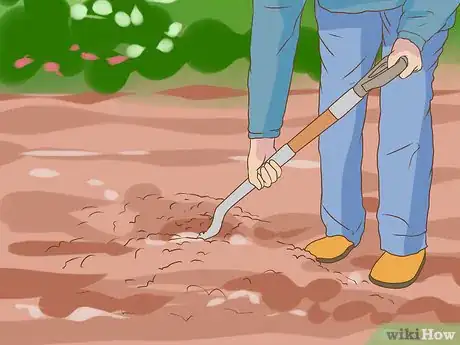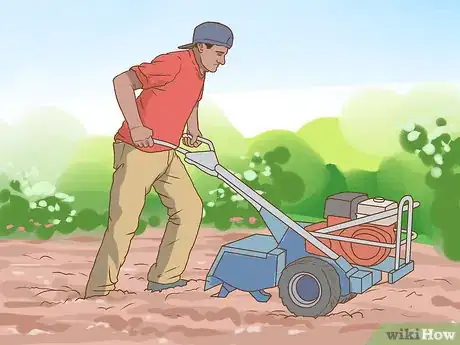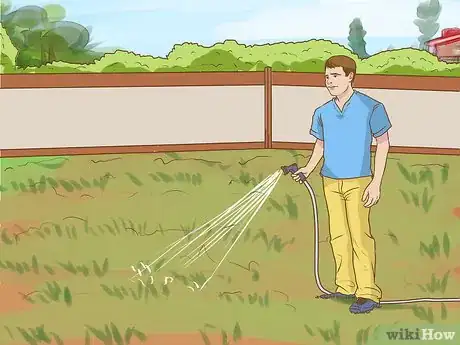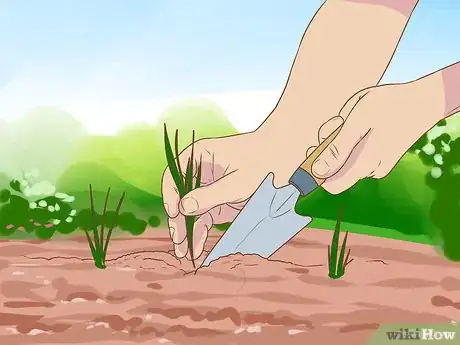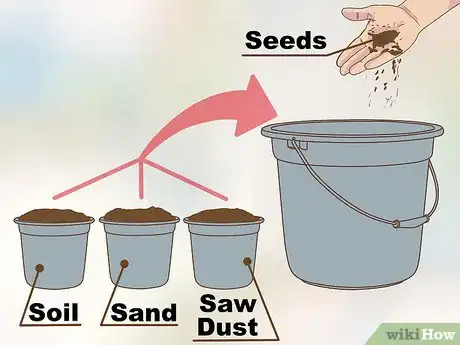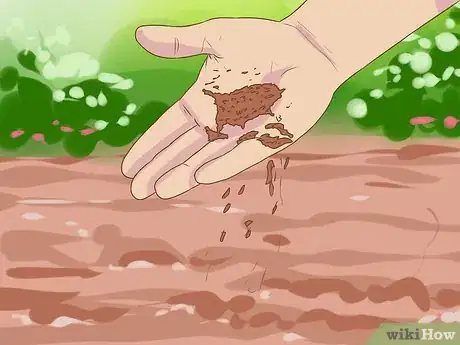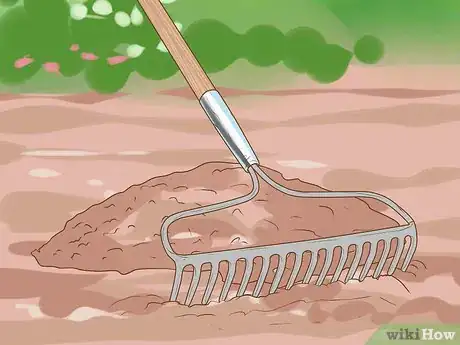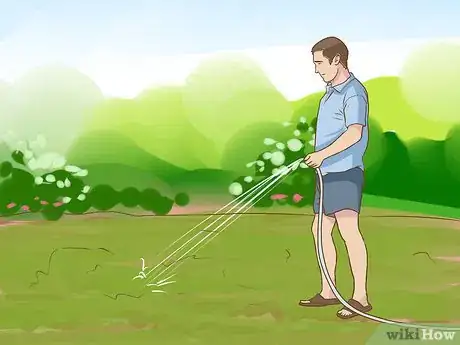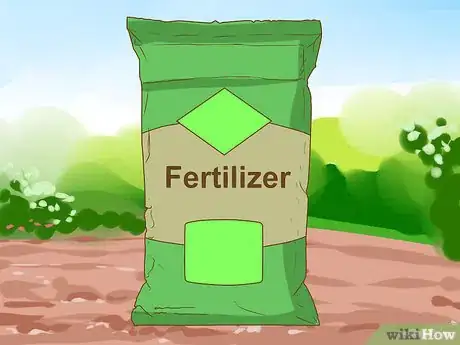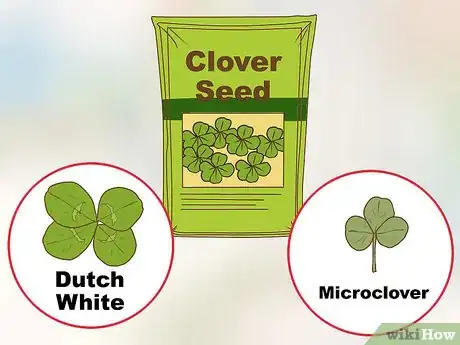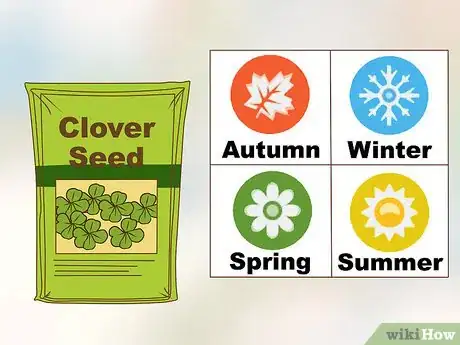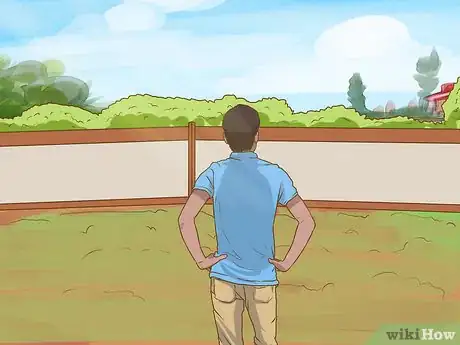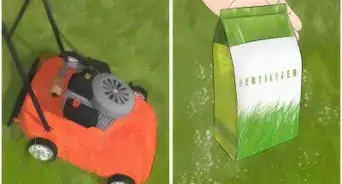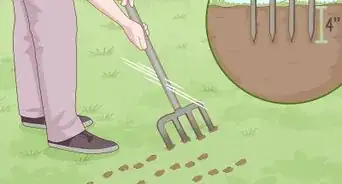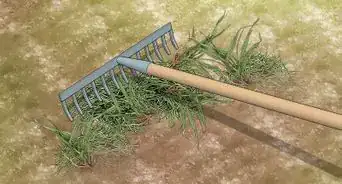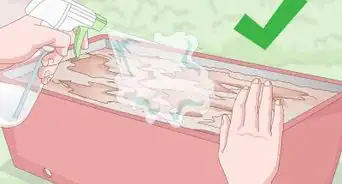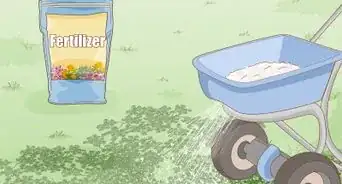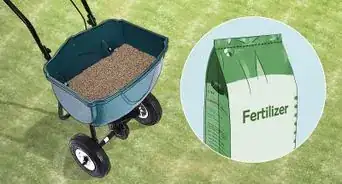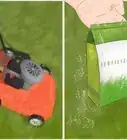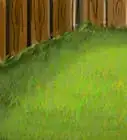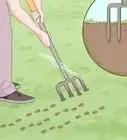This article was co-authored by Benjamin Hansen. Benjamin Hansen is a Landscape Contractor and the Owner of Artscape Gardens, a boutique landscaping company in Los Angeles, California. With over 12 years of experience, Benjamin specializes in transforming properties into aesthetic, functional, and drought-tolerant oases. Benjamin uses color scheme, dimension, and water conscious spaces to inspire the design and installation of soft scape, hardscape, patios, pathways, irrigation, drainage, fencing, concrete, lighting, and electrical work. Artscape Gardens covers all areas of the C-27 landscape contractor classification.
There are 7 references cited in this article, which can be found at the bottom of the page.
wikiHow marks an article as reader-approved once it receives enough positive feedback. This article received 13 testimonials and 96% of readers who voted found it helpful, earning it our reader-approved status.
This article has been viewed 748,230 times.
Clover is a popular alternative to grass for front and backyard lawns, mostly because clover is affordable, easy to grow, simple to maintain, and drought-resistant. Moreover, clover also attracts pollinating insects like bees, attracts deer, requires no fertilization, grows in poor soil, and requires very little attention and no mowing. Clover can also be seeded over an existing lawn and grows well with grasses, and can be used for a dog run or designated area for pets.[1]
Steps
Getting the Soil Ready
-
1Test your soil pH. Start by determining whether you have the right kind of soil to allow clover to thrive. Most varieties of clover do best in soil with a pH between 6.0 and 7.0, although some do well in soil with a pH as high as 8.5.[2] Purchase a soil testing kit from your local nursery or garden center. A soil testing kit can also tell you if your soil has any nutrient or mineral deficiencies.
- If your soil pH is too low, you can adjust it by adding lime to the soil.
- Correct a soil pH that is too high by mixing in peat moss or sawdust.
- You may need to allow up to 6 months for any adjustment to take full effect, so do your testing well in advance of when you want to plant.
- Get a type of clover that works best with your soil pH. Research clover varieties online, or check with your plant nursery or garden center.
-
2Treat the area with weed killer. Before you plant clover, you will need to get rid of any unwanted plant growth. You may use a weed killer, to eliminate any existing turf, weeds, or other unwanted plants.[3]
- Some types of weed treatments, such as systemic herbicides or chemical broadleaf treatments, may require you to wait up to two weeks before planting new ground cover. Follow all label directions carefully. If animals may feed on your clover, if you may allow the clover to flower for bees to pollinate, and if the area drains into existing groundwater, avoid using chemical compounds such as Roundup.
Advertisement -
3Till the soil a month before planting. Clover seeds will do best if they don't have to compete with weeds while they're getting established. To remove all vegetation, rocks, and debris from the area, till or rake the soil to a depth of about eight inches (20 cm).[4]
- Tilling a month in advance will give any weeds time to regrow so you can remove them before planting.
- Tilling now will also make it easier to change the soil if the pH needs to be adjusted.
-
4Water the area daily. To encourage latent weeds and vegetation to grow, provide the tilled area with a light misting of water every day. This process will help you eliminate weeds in a couple weeks, right before planting the clover seeds.
- You don't have to worry about watering if you're getting sufficient rain during this time.
-
5Remove weeds. A couple days before planting, use a spade or small shovel to dig up any weeds that have sprouted up since you tilled the land. This will kill competition and give the clover the best possible chance of thriving.
- You can also use a scythe to cut them out.
Planting Clover Seed
-
1Mix the seed with sand. Clover seeds are very small and lightweight. To ensure they spread evenly, it's best to mix them with another medium that will make them easier to distribute on the ground. You will need about 2 oz. (57 grams) of seed to cover 1000 square feet (93 sq. m.) of lawn. Before planting, mix your seeds with one of the following:[5]
- Soil (preferably unfertilized, to discourage the growth of weeds)
- Sand
- Sawdust
-
2Spread the seed. Use your hand to spread the seed evenly over the lawn. If you have a large lawn, you can use a broadcast spreader, which you can buy at local garden stores and home improvement stores. You can also spread seed over large areas by smoothing the seed and sand mixture over the ground with a leaf rake turned so that the tines face up.
-
3Rake the area. Clover seeds will not grow if they are buried in the ground, but covering them with a thin layer of soil will help to keep them in place and prevent wind or predators from disturbing them. Go over the area you've seeded with a rake that is turned so that the tines face up, and gently mix the seeds into the top layer of soil.
- Do not rake more than a quarter-inch (6 mm) deep, otherwise the seeds won't grow.
-
4Keep the seeds moist until the clover is established. Water the seeds immediately after spreading them. This process will help the seeds stick in the ground and encourage germination. Provide the seeds with a light misting of water every day that it doesn't rain until the seedlings grow leaves.
- During the spring, summer, and warmer fall months, make sure the clover gets about 1.5 to 2 inches (3.8 to 5 cm) of water per week.
- When planted during the warmer spring or summer months, clover seeds will germinate in one to two weeks.
- Make sure that the seeds do not have a chance to dry out during the day, or the sprouts will not survive.
-
5Skip the fertilizer. Clover can produce nitrogen all on its own, as long as it forms the proper relationship with the soil (which you encourage by adding a clover inoculant when planting). Adding in fertilizer will usually encourage grasses and weeds to grow instead of the clover.[6]
- Use a testing kit to check whether your soil is missing any important nutrients before you plant, and adjust accordingly.
-
6Test your soil occasionally after your lawn is planted. Once your clover lawn is established, take soil samples at least every 2-3 years. Check your soil nutrient and mineral levels, and make adjustments as needed.
- Try taking samples in spring one year, and in fall the next year. This will help give you an idea of which nutrients are most needed during different parts of the growing cycle.
Picking the Right Time and Place to Plant
-
1Buy clover seed. You can purchase clover seeds at garden stores, at most home and hardware stores, and online. You'll need roughly 2 ounces (57 g) of clover seeds per 1,000 square feet (93 square meters) of lawn.[7]
- The most popular types of clovers for lawns are Dutch White (a perennial that grows to 8 inches, or 20 centimeters) and Microclover (a durable clover that has small leaves and short stems).[8]
- Inoculated clover seeds of any variety are also popular, because it means you don't have to inoculate them yourself. Inoculation is the process of coating the seeds with a nitrogen-fixing bacterium that allows the clover to produce its own nitrogen. Be sure to store these seeds in a cool, dark place.
-
2Plant according to the season and weather. The best time to plant clover is in spring or summer. To plant in spring, make sure the last frost has occurred, and that nighttime temperatures are staying above 40° F (4° C). The best time to seed clover is between mid-March and mid-August.
- In warmer areas, you can plant clover in September and October, but plant it at least six weeks before the first frost.
- In the warmest areas where winters are mild and there's rarely snow or freezing temperatures in winter, you can plant clover all year round.
-
3Choose a sunny location. Depending on the size of your lawn, you may have conditions that vary greatly from one area to another, so some areas may not be ideal for clover. Clover is very hardy and will even grow in partial shade, but it will do best when it gets between four and six hours of sunlight per day.
- Where possible, prune and trim trees, hedges, and brush to ensure the clover gets enough light.
Expert Q&A
-
QuestionI live in a city, but in a rural part of it. Can I let the clover stay wild without having a garden that looks unsightly for my neighbors?
 Anthony "TC" WilliamsAnthony "TC" Williams is a Professional Landscaper in Idaho. He is the President and Founder of Aqua Conservation Landscape & Irrigation, an Idaho Registered Landscape Business Entity. With over 21 years of landscaping experience, TC has worked on projects such as the Idaho Botanical Garden in Boise, Idaho. He is a Idaho Registered Contractor and a previously Licensed Irrigator in the State of Texas.
Anthony "TC" WilliamsAnthony "TC" Williams is a Professional Landscaper in Idaho. He is the President and Founder of Aqua Conservation Landscape & Irrigation, an Idaho Registered Landscape Business Entity. With over 21 years of landscaping experience, TC has worked on projects such as the Idaho Botanical Garden in Boise, Idaho. He is a Idaho Registered Contractor and a previously Licensed Irrigator in the State of Texas.
Experienced Landscaper It only grows 4 to about 8 inches high at most so it will look like a natural groundcover if left natural looking.
It only grows 4 to about 8 inches high at most so it will look like a natural groundcover if left natural looking. -
QuestionHow do I get rid of a clover lawn?
 Anthony "TC" WilliamsAnthony "TC" Williams is a Professional Landscaper in Idaho. He is the President and Founder of Aqua Conservation Landscape & Irrigation, an Idaho Registered Landscape Business Entity. With over 21 years of landscaping experience, TC has worked on projects such as the Idaho Botanical Garden in Boise, Idaho. He is a Idaho Registered Contractor and a previously Licensed Irrigator in the State of Texas.
Anthony "TC" WilliamsAnthony "TC" Williams is a Professional Landscaper in Idaho. He is the President and Founder of Aqua Conservation Landscape & Irrigation, an Idaho Registered Landscape Business Entity. With over 21 years of landscaping experience, TC has worked on projects such as the Idaho Botanical Garden in Boise, Idaho. He is a Idaho Registered Contractor and a previously Licensed Irrigator in the State of Texas.
Experienced Landscaper You can attempt natural killing of it by covering with black plastic, cardboard etc. to block sun light, use a chemical vegetation killer and then by either method till up the soil to a depth of 8 to 10 inches, rake out and remove debris and re-plant.
You can attempt natural killing of it by covering with black plastic, cardboard etc. to block sun light, use a chemical vegetation killer and then by either method till up the soil to a depth of 8 to 10 inches, rake out and remove debris and re-plant. -
QuestionCan I mow a clover lawn?
 Community AnswerYes, you can mow it just like a regular lawn. If you mow it too early, however, you may not see the flowers.
Community AnswerYes, you can mow it just like a regular lawn. If you mow it too early, however, you may not see the flowers.
References
- ↑ Benjamin Hansen. Licensed Landscape Contractor. Expert Interview. 6 October 2020.
- ↑ https://aggieclover.tamu.edu/planting_guide/
- ↑ http://www.finegardening.com/planting-ground-covers
- ↑ http://www.gardensalive.com/product/well-have-you-rolling-in-the-clover/you_bet_your_garden
- ↑ https://dengarden.com/gardening/Clover-Lawns
- ↑ http://www.gardensalive.com/product/well-have-you-rolling-in-the-clover/you_bet_your_garden
- ↑ http://www.almanac.com/content/clover-comeback
- ↑ http://aggieclover.tamu.edu/planting_guide/
- ↑ https://dengarden.com/gardening/Clover-Lawns
About This Article
If you want to grow a clover lawn, prepare the soil by ensuring the pH is between 6.0 and 7.0. If the pH is too high, add peat moss or sawdust to your soil, and if it is too low, add some lime. Clovers also thrive in sand, so mix in some sand or sawdust with your soil. Plan on planting your clover seeds in the spring or summer when nighttime temperatures are above 40° F. When it is time, spread the seeds with a rake and water daily until they become established. After that, give them 1.5 to 2 inches of water per week. For tips from our Landscaper reviewer on how to choose a variety of clover seed, keep scrolling.

